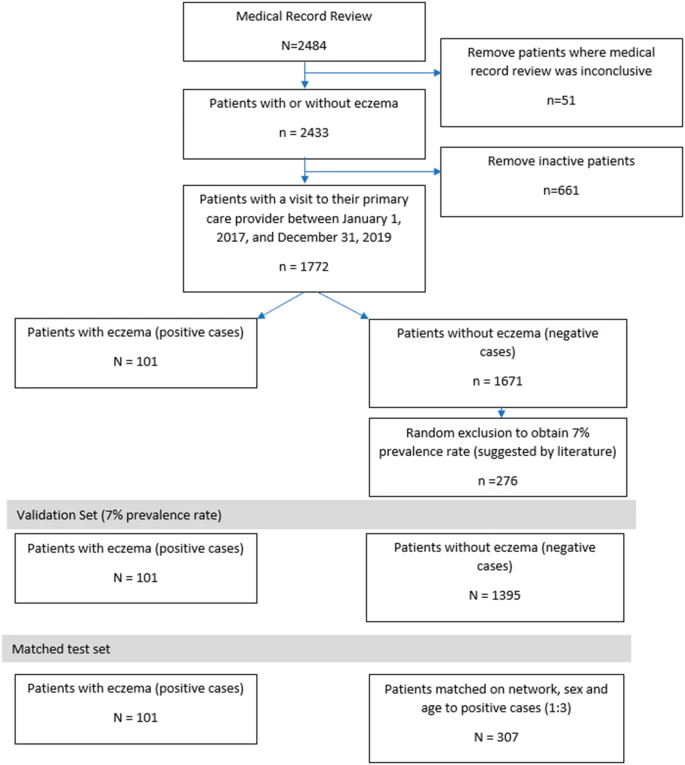Hannah Stirton, Leanne Kosowan, Elissa M Abrams, Jennifer LP Protudjer, John Queenan & Alexander Singer
Allergy, Asthma & Clinical Immunology volume 19, Article number: 46 (2023
Abstract
Background
To validate case definitions for eczema using primary care Electronic Medical Record (EMR) data from the Canadian Primary Care Sentential Surveillance Network (CPCSSN).
Methods
This study used EMR data from 1,574 primary care providers in seven Canadian provinces, representing 689,301 patients. Using a subset of patient records seven medical students or family medicine residents created a reference set of 1,772 patients. A total of 23 clinician-informed case definitions were validated against the reference. We assessed agreement using sensitivity (SE), specificity (SP), positive predictive value (PPV), negative predictive value (NPV) and overall accuracy. The case definitions with the best agreement statistics were deployed to estimate the prevalence of eczema in the CPCSSN.Results
Case definition 1 had the highest SE (92.1%,85.0-96.5) but a lower SP (88.5%,86.7–90.1) and PPV (36.6%,33.1–40.3). Case definition 7 was the most specific case definition with a SP (99.8%, 99.4–100) and PPV (84.2%,61.2–94.7) but low SE (15.8%,9.3–24.5). Case definition 17 had a SE (75.3%, 65.7–83.3), SP (93.8%, 91.5–94.3) and PPV 43.7% (38.3–49.2). When we applied the most specific and most sensitive case definitions, we estimate the prevalence of eczema to be between 0.8 and 15.1%. Case definition 17 suggests an eczema prevalence estimate of 8.2% (8.08–8.21%).
Conclusions
We validated EMR-based eczema case definitions to estimate the prevalence of clinician-documented eczema. Future studies may choose to apply one or more of these definitions’ dependent on their studies objectives to inform disease surveillance as well as explore burden of illness or interventions related to eczema care in Canada.


No comments:
Post a Comment